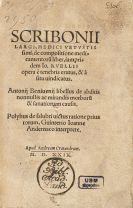
Daniel Bernoulli
Basel
1700 -
1782
The Swiss doctor, mathematician and physician Daniel Bernoulli (1700-82), son of the mathematician Johann Bernoulli, studied medicine and mathematics in his home town of Basel, in Heidelberg and Strasbourg. After he had made a name for himself with various works (including the pharaoh game and the principle of water flowing out of a container), he was called to the St. Petersburg academy of science in 1725, where he spent a total of eight fruitful years. During this time he wrote important texts on the theory of mechanics, including a first version of his famous treatise on hydrodynamics.
In 1733 he became a professor of anatomy and botany in Basel. He had to wait until 1750 for his desired chair for physic, which he had wanted for a long time. His pioneering success was the combination of Newton's physics with methods of Leibniz's infinitesimal calculus, whereby he examined the hypotheses he reached with careful experiments.
He was the first among the mathematicians in the Bernoulli family, to fully accept Newton's theory of physics, after he had given up trying to find a mechanical explanation for gravitation. In his famous main work "Hydrodynamica" (Basel 1738), which was a milestone in the theory of the flowing behavior of liquids, Daniel Bernoulli developed the theory of watermills, windmills, water pumps and water propellers. He was the first to differentiate between hydrostatic and hydrodynamic pressure. His "Bernoulli Principle on stationary flow" has remained the general principle of hydrodynamics and aerodynamics up to date and forms the basis of modern aviation.
The solution he presented to the wave equation for a vibrating string with a sum of an infinite number of trigonometrical functions was further developed by Fourier and Dirichlet and now forms a mathematical tool for today's quantum mechanics.
Would you like to sell a work by Daniel Bernoulli?
Infos for seller


